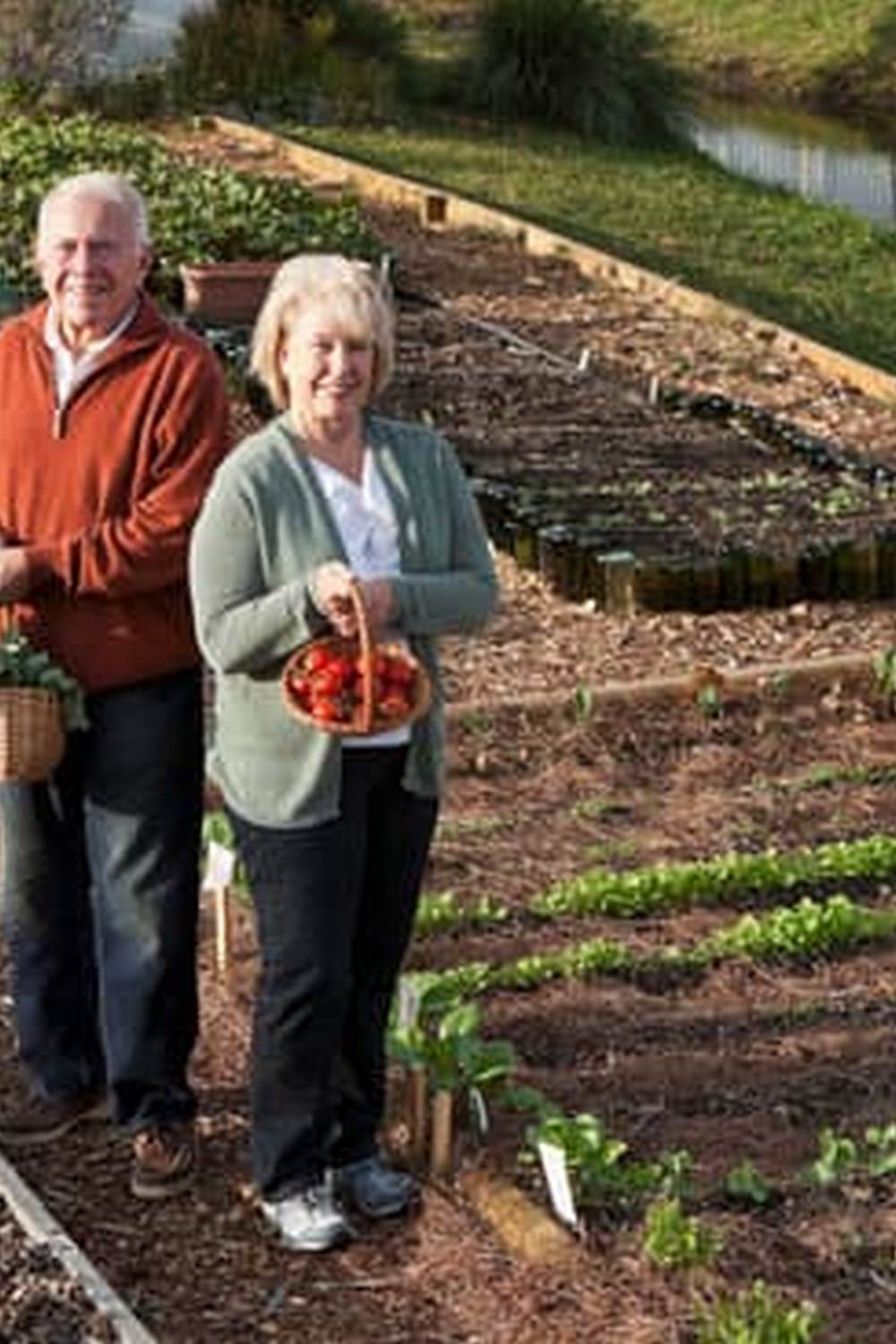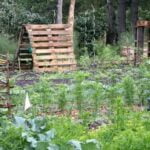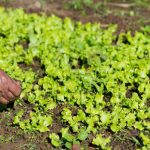Are you looking to build up vegetable gardens but don’t know where to start? Vegetable gardening is a rewarding and enjoyable activity that allows you to grow your own fresh and nutritious produce right in your backyard. In this article, we will provide you with all the essential information you need to kick-start your vegetable gardening journey.
Growing your own vegetables has become increasingly popular in recent years, and for good reason. Not only does it provide you with a sustainable and cost-effective source of fresh produce, but it also offers numerous health benefits. By cultivating your own vegetable garden, you can ensure that your food is free from harmful chemicals and pesticides while also enjoying the physical activity and mental relaxation that comes with gardening.
Before you begin building up your vegetable garden, it’s essential to understand the key factors that contribute to a successful harvest. From choosing the right location and preparing the soil to selecting suitable vegetables for your climate and dealing with pests and diseases, there are various aspects to consider. So, let’s dive into the world of vegetable gardening and get ready to embrace the joy of homegrown vegetables.
Benefits of Growing Your Own Vegetables
Growing your own vegetables has a multitude of benefits, from promoting a healthier lifestyle to reducing your grocery expenses. Here are some of the advantages of starting and maintaining your own vegetable garden:
- Health Benefits: Homegrown vegetables are richer in nutrients and free from harmful pesticides and chemicals, promoting a healthier diet and lifestyle for you and your family.
- Cost Savings: By growing your own vegetables, you can significantly reduce the amount of money spent on groceries. This can lead to substantial savings over time, especially during harvest seasons.
- Sustainability: Building up vegetable gardens is an eco-friendly practice that reduces carbon footprint by minimizing the need for long-distance transportation of produce and plastic packaging.
In addition to these practical benefits, tending to a vegetable garden can also have positive effects on mental well-being. The act of caring for plants and watching them grow can be incredibly rewarding and therapeutic. Furthermore, involving children in the process can help teach valuable lessons about responsibility, patience, and where food comes from.
Ultimately, growing your own vegetables allows you to have more control over what you eat while contributing to a greener environment. Whether it’s in a backyard, on a balcony, or in community gardens, there are numerous ways to start building up vegetable gardens that will enrich your life in various ways.
Choosing the Right Location for Your Vegetable Garden
When it comes to building up vegetable gardens, one of the most important decisions you will need to make is choosing the right location for your garden. The success of your garden will largely depend on this choice. There are a few key factors to consider when selecting the best location for your vegetable garden.
First and foremost, your chosen location should receive ample sunlight. Most vegetables require at least 6 hours of direct sunlight each day to thrive. Take note of any potential obstructions such as buildings or trees that could block sunlight to your garden area.
Another important factor to consider is access to water. Your garden should be situated near a water source, whether it be a hose or irrigation system, to ensure that your plants receive adequate watering.
Lastly, consider the soil in the area where you plan to build up your vegetable garden. The soil should be well-draining and fertile. If you’re dealing with poor soil quality, consider using raised beds or containers filled with high-quality soil for optimal growth.
| Factor | Consideration |
|---|---|
| Sunlight | At least 6 hours of direct sunlight per day |
| Water Source | Accessibility to a water source for regular watering |
| Soil Quality | Well-draining and fertile soil; raised beds or containers may be used if necessary |
By keeping these factors in mind when choosing the right location for your vegetable garden, you can set yourself up for a successful and bountiful harvest.
Soil Preparation and Composting
When it comes to building up vegetable gardens, one of the most crucial steps is preparing the soil and utilizing compost. By taking the time to properly prepare your garden beds and incorporate compost into the soil, you can ensure that your vegetables will thrive and produce a bountiful harvest. Here are a few tips to help you get started with soil preparation and composting for your vegetable garden:
1. Test the Soil: Before planting any vegetables, it’s important to test the pH level and nutrient content of your soil. You can purchase a home testing kit or send a sample to a local agricultural extension office for analysis. This will help you determine if any adjustments need to be made before planting.
2. Improve Soil Structure: Once you have tested your soil, assess its structure. If it is too compacted, consider adding organic matter such as compost, aged manure, or peat moss to improve its texture and drainage.
3. Composting: Compost is a valuable addition to any vegetable garden as it provides essential nutrients for plant growth and improves soil structure. You can create your own compost pile using kitchen scraps, yard waste, and other organic materials. Alternatively, you can purchase compost from gardening centers or local suppliers.
4. Incorporate Compost: When preparing your garden beds, mix in a generous amount of compost to enrich the soil. Aim to have at least 3 inches of compost mixed into the top 6-8 inches of soil.
By following these steps for soil preparation and composting, you can ensure that your vegetable garden has the right foundation for healthy and productive plants. Remember that healthy soil is the key to successful gardening and bountiful harvests.
Selecting the Best Vegetables to Grow
When it comes to selecting the best vegetables to grow in your garden, there are several factors to consider. The first thing to think about is what vegetables you and your family enjoy eating. There’s no point in growing a vegetable that no one will eat, so focus on planting things that are commonly used in your household.
Additionally, consider the climate and growing conditions of your area. Some vegetables thrive in cool weather, while others need warm temperatures to flourish.
Another important factor when choosing which vegetables to grow is the space available in your garden. If you have limited space, it’s best to prioritize vegetables that can be grown vertically or in containers. This includes options like tomatoes, peppers, and herbs. On the other hand, if you have ample space, you may want to consider larger plants such as zucchini, pumpkins, or corn.
It’s also a good idea to research which vegetables are well-suited for beginners. Some plants are more forgiving than others and require less maintenance and attention. Examples of beginner-friendly vegetables include lettuce, carrots, radishes, and green beans. By choosing these easier-to-grow options, you can increase your chances of success as a first-time gardener looking to build up vegetable gardens.
Planting and Maintaining Your Vegetable Garden
Once you have chosen the perfect location for your vegetable garden and prepared the soil, it’s time to start planting. When deciding which vegetables to grow, consider the climate in your area and the amount of sunlight your garden receives. Some popular vegetables that are relatively easy to grow include tomatoes, peppers, lettuce, carrots, and zucchini.
When it comes to maintaining your vegetable garden, regular watering is essential. Most vegetables need about 1-2 inches of water per week, either from rainfall or irrigation. It’s also important to keep an eye out for weeds and remove them regularly to prevent them from competing with your vegetables for nutrients.
In addition to watering and weeding, regular fertilization is crucial for the health and productivity of your vegetable garden. Using compost or organic fertilizers can improve soil quality and provide essential nutrients for your plants.
| Vegetable | Sunlight Needed |
|---|---|
| Tomatoes | Full sun |
| Peppers | 6 hours of sun |
| Lettuce | Partial shade |
By consistently caring for your vegetable garden through proper planting techniques and maintenance routines, you can ensure a bountiful harvest of delicious homegrown produce.
Dealing With Common Pests and Diseases
Identifying Common Pests
One of the challenges in maintaining a healthy vegetable garden is dealing with common pests that can wreak havoc on your plants. Some of the most common pests that you may encounter include aphids, caterpillars, snails, slugs, and beetles. It is important to regularly inspect your plants for any signs of pest infestations so that you can take action early on.
Natural Pest Control Methods
Instead of resorting to harmful chemical pesticides, consider using natural pest control methods to protect your vegetables. For example, introducing beneficial insects such as ladybugs and praying mantises into your garden can help keep pest populations in check. You can also make use of homemade remedies like neem oil spray or garlic and pepper repellents to deter pests from attacking your plants.
Preventing and Managing Diseases
In addition to pests, vegetable gardens are also susceptible to various diseases such as powdery mildew, blight, and root rot. To prevent the spread of diseases, it is crucial to practice good gardening hygiene by removing infected plant parts and keeping the garden clean and well-ventilated. Utilizing disease-resistant varieties of vegetables can also help minimize the risk of infections.
By incorporating these strategies for dealing with common pests and diseases, you can ensure that your vegetable garden stays healthy and productive throughout the growing season.
Remember that building up vegetable gardens involves not only nurturing the plants but also safeguarding them against potential threats. With proper care and attention, you can minimize the impact of pests and diseases on your homegrown vegetables.
Tips for a Successful Harvest and Storage
Harvesting at the Right Time
When it comes to harvesting your homegrown vegetables, timing is crucial. Each type of vegetable has its own specific harvesting time, so it’s important to familiarize yourself with the signs of when they are ready to be picked.
For example, tomatoes should be harvested when they are fully colored and slightly soft to the touch, while carrots should be harvested when they have reached the desired size and color. Harvesting at the right time ensures that you get the best flavor and texture from your vegetables.
Proper Storage Techniques
After harvesting your vegetables, it’s essential to store them properly to prolong their freshness. Certain vegetables like onions, garlic, and potatoes thrive in cool, dark conditions with good airflow, while others such as tomatoes and peppers do best when stored at room temperature.
It’s also important to remove any damaged or spoiled produce from your harvest to prevent spoilage of the entire lot. Consider investing in proper storage containers such as breathable mesh bags or plastic bins with ventilation holes to keep your vegetables fresh for longer.
Preserving Your Harvest
If you find yourself with an abundance of homegrown vegetables, consider preserving them for future use. Canning, freezing, pickling, and drying are all great methods for preserving your harvest. These techniques allow you to enjoy your homegrown produce throughout the year and reduce food waste. Make sure to follow proper preservation procedures for each type of vegetable to maintain their quality and safety for consumption.
By incorporating these tips into your vegetable gardening routine, you’ll be able to enjoy a successful harvest and have a bountiful supply of fresh produce throughout the year.
Conclusion
In conclusion, building up vegetable gardens can bring a multitude of benefits to both individuals and communities. By embracing the joy of homegrown vegetables, people can foster a sense of connection with nature as they witness the growth and development of their plants.
Furthermore, they can take pride in knowing that they are contributing to sustainable practices and reducing their environmental footprint. The act of tending to a vegetable garden also provides opportunities for physical activity and stress relief, making it a truly rewarding endeavor.
Moreover, nurturing one’s own vegetable garden allows for the consumption of fresh, nutritious produce that can result in improved health and well-being. With proper care and attention, homegrown vegetables often have superior flavor and nutritional content compared to store-bought options. This can lead to a greater appreciation for wholesome foods and encourage healthier eating habits among individuals and their families.
Building up vegetable gardens not only offers personal satisfaction but also has the potential to cultivate a sense of community. Whether through sharing bountiful harvests with neighbors or participating in local gardening initiatives, the practice of growing one’s own vegetables can help foster connections among like-minded individuals. Ultimately, the act of building up vegetable gardens has far-reaching benefits that extend beyond the individual level and contribute positively to society as a whole.
Frequently Asked Questions
How Do I Prepare the Soil for My Vegetable Garden?
To prepare the soil for a vegetable garden, start by removing any debris and weeds. Loosen the soil with a shovel or tiller to improve drainage and aeration. Then, add organic matter like compost to enrich the soil with nutrients.
How Do I Layout My Vegetable Garden?
When laying out a vegetable garden, consider factors like sunlight, water access, and spacing between plants. Arrange rows north to south for optimal sun exposure. Use paths to easily access your plants and consider planting taller vegetables in the back and shorter ones in front.
What Do You Put in the Bottom of a Raised Garden Bed?
In the bottom of a raised garden bed, it’s important to create good drainage to prevent waterlogging. Start by lining the bottom with hardware cloth or landscaping fabric to prevent weeds from growing up into the bed. Then add a layer of gravel or small rocks to aid in drainage before adding soil on top.

If you’re looking to get into vegetable gardening, or are just looking for some tips on how to make your current garden better, then you’ve come to the right place! My name is Ethel and I have been gardening for years. In this blog, I’m going to share with you some of my best tips on how to create a successful vegetable garden.





